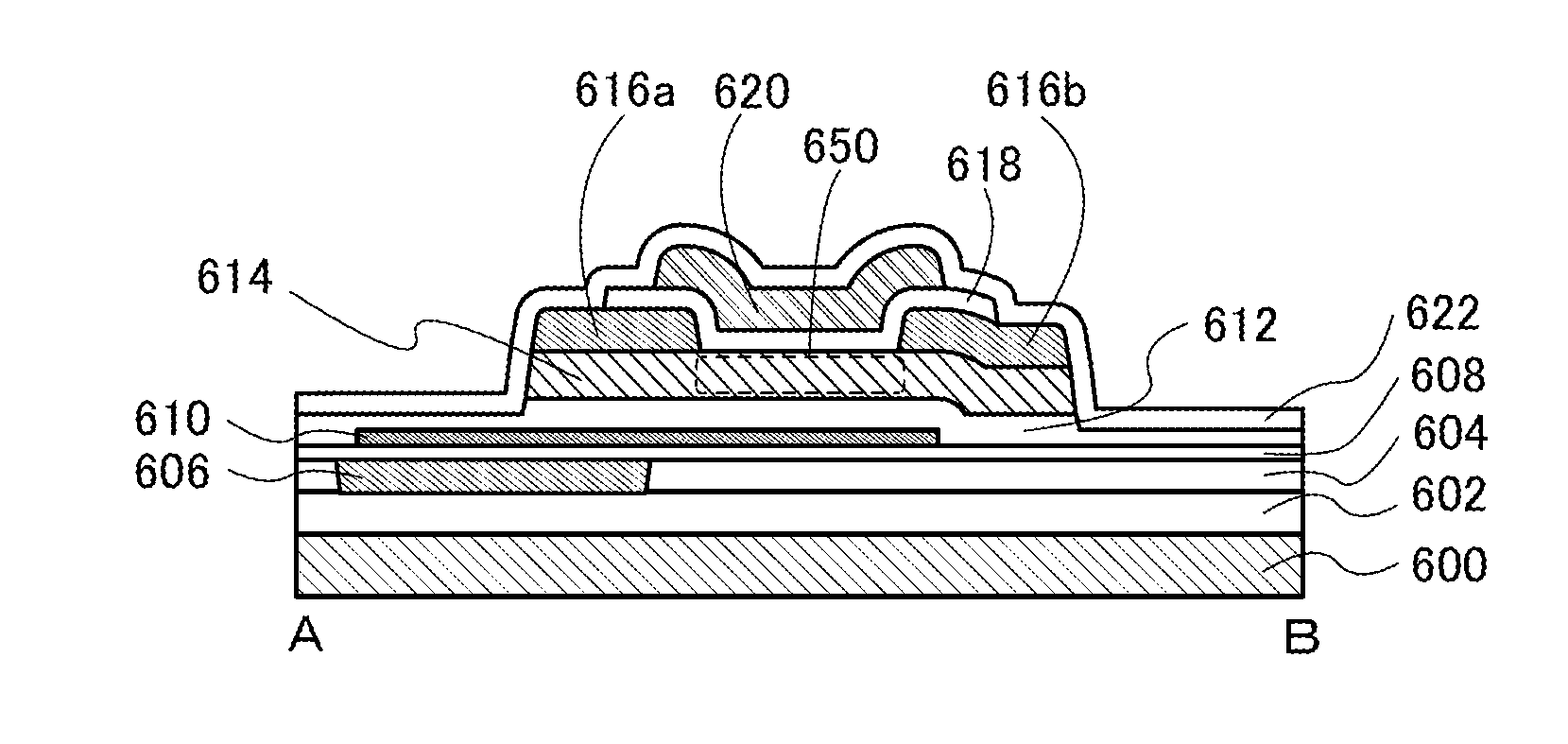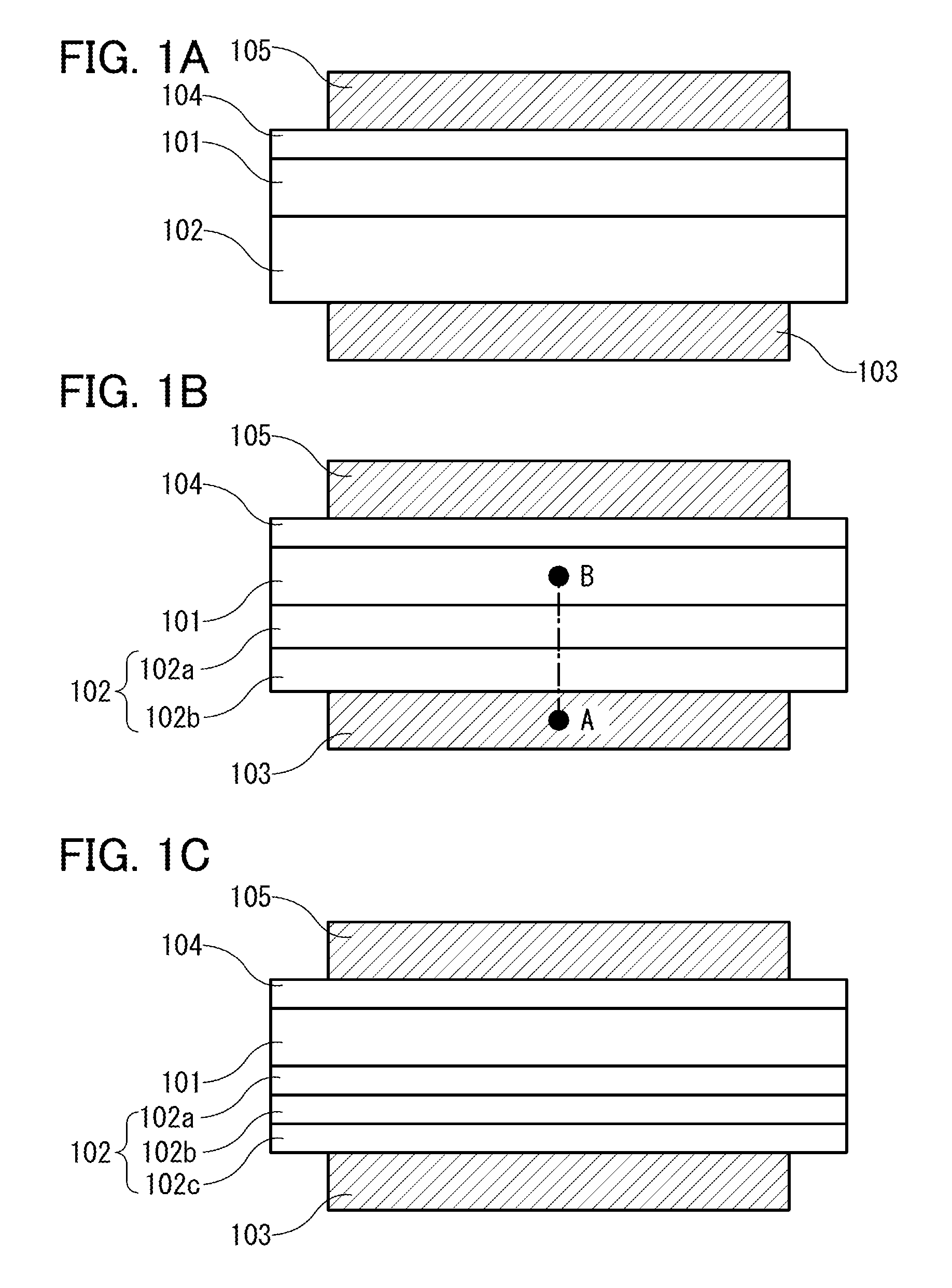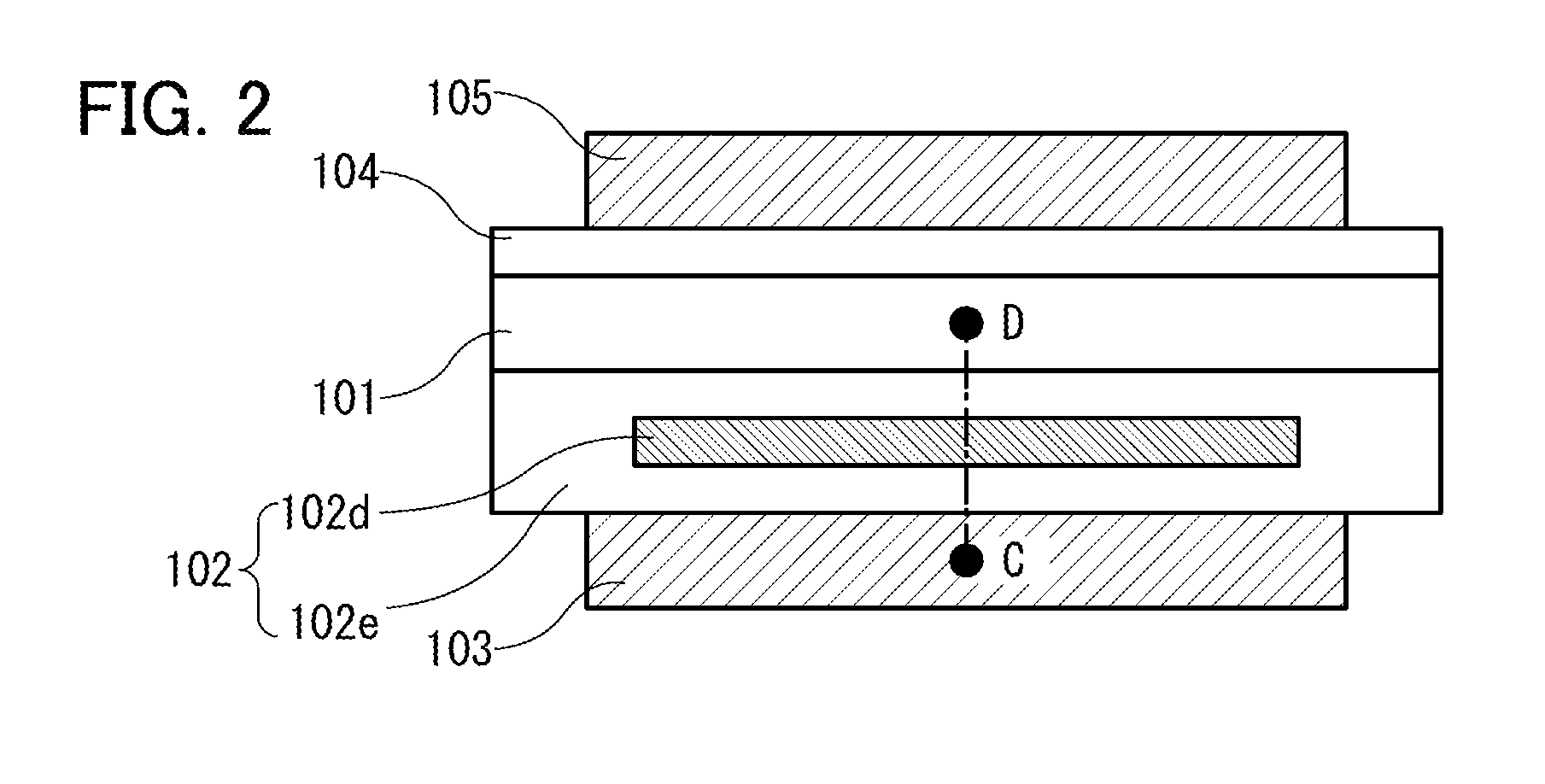Semiconductor device
- Summary
- Abstract
- Description
- Claims
- Application Information
AI Technical Summary
Benefits of technology
Problems solved by technology
Method used
Image
Examples
embodiment 1
[0081]In this embodiment, a structure of a semiconductor device including a semiconductor, an electron trap layer, and a gate electrode, the operation principle of the semiconductor device, and a circuit that uses the semiconductor device are described. FIG. 1A shows a semiconductor device including a semiconductor 101, an electron trap layer 102, a gate electrode 103, a gate insulating layer 104, and a gate electrode 105.
[0082]The electron trap layer 102 may be, for example, a stack including an insulator 102a and an insulator 102b as illustrated in FIG. 1B. Alternatively, the electron trap layer 102 may be a stack including the insulator 102a, the insulator 102b, and an insulator 102c as illustrated in FIG. 1C. Alternatively, the electron trap layer 102 may be a stack including more insulators. Alternatively, as illustrated in FIG. 2, the electron trap layer 102 may include an insulator 102e and an electrically isolated conductor 102d in the insulator 102e. The insulator 102e may ...
embodiment 2
[0121]In this embodiment, a structure of a transistor of one embodiment of the present invention is described with reference to drawings.
[0122]FIGS. 5A to 5C are a top view and cross-sectional views that illustrate a transistor of one embodiment of the present invention. FIG. 5A is the top view. FIG. 5B illustrates a cross section taken along the dashed-dotted line A-B in FIG. 5A. FIG. 5C illustrates a cross section taken along the dashed-dotted line C-D in FIG. 5A. Note that for simplification of the drawing, some components are not illustrated in the top view of FIG. 5A. In some cases, the direction of the dashed-dotted line A-B is referred to as a channel length direction, and the direction of the dashed-dotted line C-D is referred to as a channel width direction.
[0123]The transistor illustrated in FIGS. 5A to 5C includes an insulator 602 over a substrate 600; an insulator 604 over the insulator 602; a gate electrode 606 embedded in the insulator 604; an insulator 608 over the in...
embodiment 3
[0174]This embodiment describes a method for forming the transistor in FIGS. 5A to 5C, which is described in Embodiment 2, with reference to FIGS. 14A to 14C and FIGS. 15A to 15C.
[0175]A cross section taken along the dashed-dotted line A-B in FIG. 5A is illustrated in the left side of each of FIGS. 14A to 14C and FIGS. 15A to 15C. A cross section taken along the dashed-dotted line C-D in FIG. 5A is illustrated in the right side of each of FIGS. 14A to 14C and FIGS. 15A to 15C.
[0176]The insulator 602 is formed over the substrate 600. As the substrate 600, a single material semiconductor substrate of silicon, germanium, or the like or a compound semiconductor substrate of silicon carbide, silicon germanium, gallium arsenide, indium phosphide, zinc oxide, gallium oxide, or the like can be used, for example. Alternatively, an insulator substrate made of quartz, glass, or the like may be used. For the insulator 602, a silicon oxide film, a silicon oxynitride film, a silicon nitride oxide...
PUM
 Login to View More
Login to View More Abstract
Description
Claims
Application Information
 Login to View More
Login to View More - R&D
- Intellectual Property
- Life Sciences
- Materials
- Tech Scout
- Unparalleled Data Quality
- Higher Quality Content
- 60% Fewer Hallucinations
Browse by: Latest US Patents, China's latest patents, Technical Efficacy Thesaurus, Application Domain, Technology Topic, Popular Technical Reports.
© 2025 PatSnap. All rights reserved.Legal|Privacy policy|Modern Slavery Act Transparency Statement|Sitemap|About US| Contact US: help@patsnap.com



